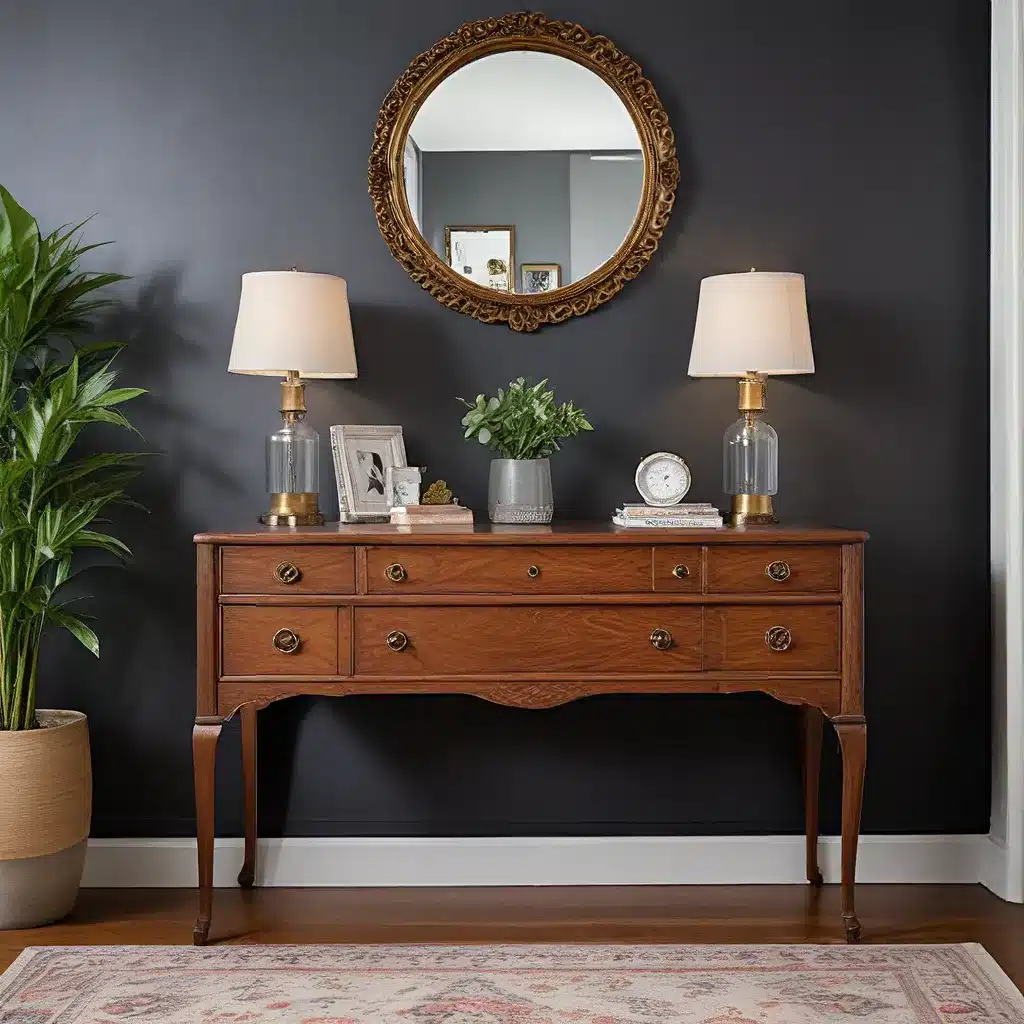
The Enduring Allure of Retro Design
In the ever-evolving world of interior design, a captivating trend is making its comeback: retro and vintage aesthetics. This resurgence is not just about nostalgia; it’s a celebration of timeless design elements that add character and depth to modern spaces. Join us on a journey where the past meets the present, exploring the art of seamlessly incorporating vintage pieces into contemporary interiors.
The revival of retro design trends goes beyond a mere nod to the past; it’s a testament to the enduring appeal of styles that have stood the test of time. From the clean lines and iconic furniture of mid-century modern to the intricate patterns and graceful curves of bygone eras, these design elements are captivating a new generation of homeowners and design enthusiasts alike.
Embracing Mid-Century Charm
Mid-century modern design has experienced a true renaissance, capturing the hearts and imaginations of those seeking a touch of retro sophistication in their homes. This iconic style, which rose to prominence in the 1950s and 60s, is defined by its minimalist aesthetic, clean lines, and a focus on functionality.
Designers at Urban Grace Interiors have mastered the art of integrating mid-century elements into contemporary interiors, creating a harmonious blend of the past and present. By carefully selecting vintage-inspired furniture, such as sleek, tapered-leg coffee tables or sculptural armchairs, they infuse spaces with a sense of timeless elegance.
Incorporating Vintage Elements: From Kitsch to Chic
Bringing vintage elements into the 21st century requires a keen eye and a touch of creativity. Whether it’s repurposing antique pieces or experimenting with bold patterns, the key is to strike the perfect balance between the old and the new. Designers who have mastered this art understand that it’s not just about decoration; it’s about infusing spaces with narratives from the past, transforming the act of furnishing into a journey through time.
One of the most effective ways to incorporate vintage elements is through the strategic use of upcycled and repurposed furniture. By giving new life to old treasures, designers are not only adding character to modern interiors but also embracing sustainable practices. The result is a unique blend of nostalgia and contemporary flair that resonates with eco-conscious homeowners.
Reviving the Retro Palette
Vintage design is not just about the furniture and fixtures; it’s also about embracing the vibrant color palettes and textures that defined past eras. From the soft pastels and muted tones of the mid-century era to the bold, geometric patterns of the 1970s, these retro-inspired hues and motifs are making a comeback in modern interiors.
Designers are skillfully incorporating these vintage-inspired color schemes and textural elements to create a cohesive and visually appealing design narrative. By striking a delicate balance between the vintage accents and the clean lines of contemporary design, they are able to evoke a sense of nostalgia while keeping the space feeling fresh and relevant.
Blending Old and New: A Harmonious Dialogue
The true art of incorporating vintage elements into modern interiors lies in the ability to create a harmonious dialogue between the past and the present. This delicate dance involves thoughtfully selecting and integrating vintage pieces in a way that seamlessly complements the overall aesthetic of the space.
Retaining classic architectural features, such as original moldings, hardwood floors, and unique fixtures, while introducing modern comforts and functional upgrades, can result in a space that is both timeless and contemporary. The key is to respect the historical significance of the home while ensuring it meets the needs and preferences of today’s homeowners.
Preserving History, Embracing Innovation
The intersection of vintage revival and modern architecture is a symphony where historical charm dances with contemporary functionality. By carefully reinstituting traditional building techniques and incorporating reclaimed elements, designers are able to create spaces that honor the legacy of the past while embracing the possibilities of the present.
This deliberate fusion of old-world charm and modern innovation is not just about aesthetics; it’s about crafting buildings that tell a story, where each architectural element contributes to a narrative that spans centuries. It’s an architectural revival that goes beyond mere recreation, reimagining the past in a way that resonates with the needs and desires of today’s homeowners.
The Art of Vintage Revival: A Design Philosophy
Vintage revival is more than just a trend; it’s a design philosophy that celebrates the enduring allure of the past in the context of the present. By seamlessly integrating vintage elements into modern spaces, designers are breathing life into interiors and creating narratives that transcend temporal boundaries.
This journey of discovering and curating vintage pieces, understanding their historical significance, and thoughtfully incorporating them into contemporary design, is a true testament to the timeless nature of elegant design. It’s a design philosophy that values the craftsmanship and stories embedded in each piece, transforming the act of furnishing into a meaningful exploration of the past.
For those enchanted by the idea of vintage revival, the path forward involves immersing oneself in the principles of this design approach. Specialized interior design courses and workshops provide a fertile ground for exploring the art of infusing modernity with vintage charm, equipping designers and homeowners alike with the knowledge and skills to create truly timeless spaces.
As we navigate the delicate balance between eras, we find that the art of vintage revival is a celebration of the enduring nature of true elegance. It’s a design philosophy that transcends temporal boundaries, breathing new life into the past and weaving it seamlessly into the fabric of the present, creating spaces that are a delightful blend of nostalgia and contemporary flair.

